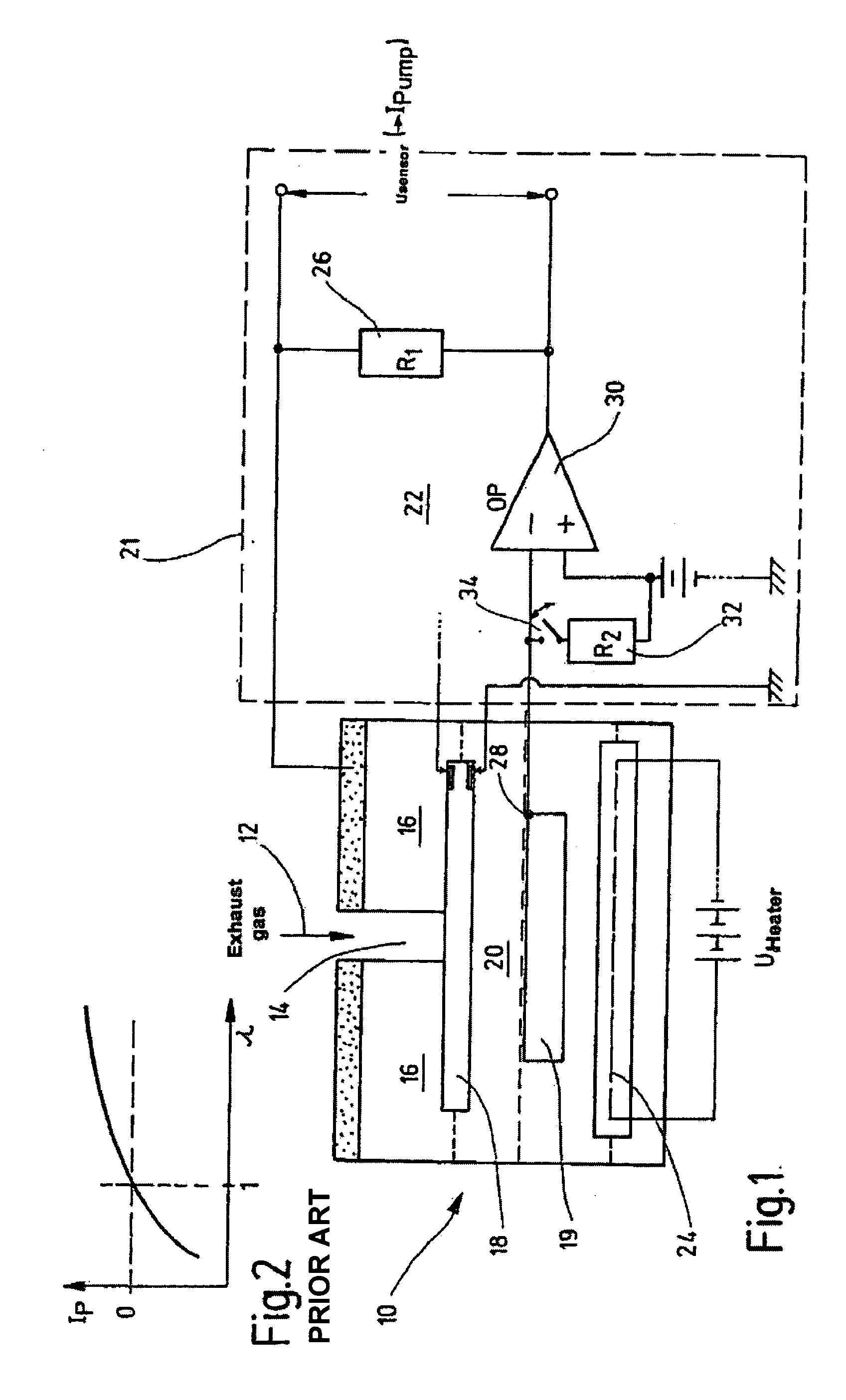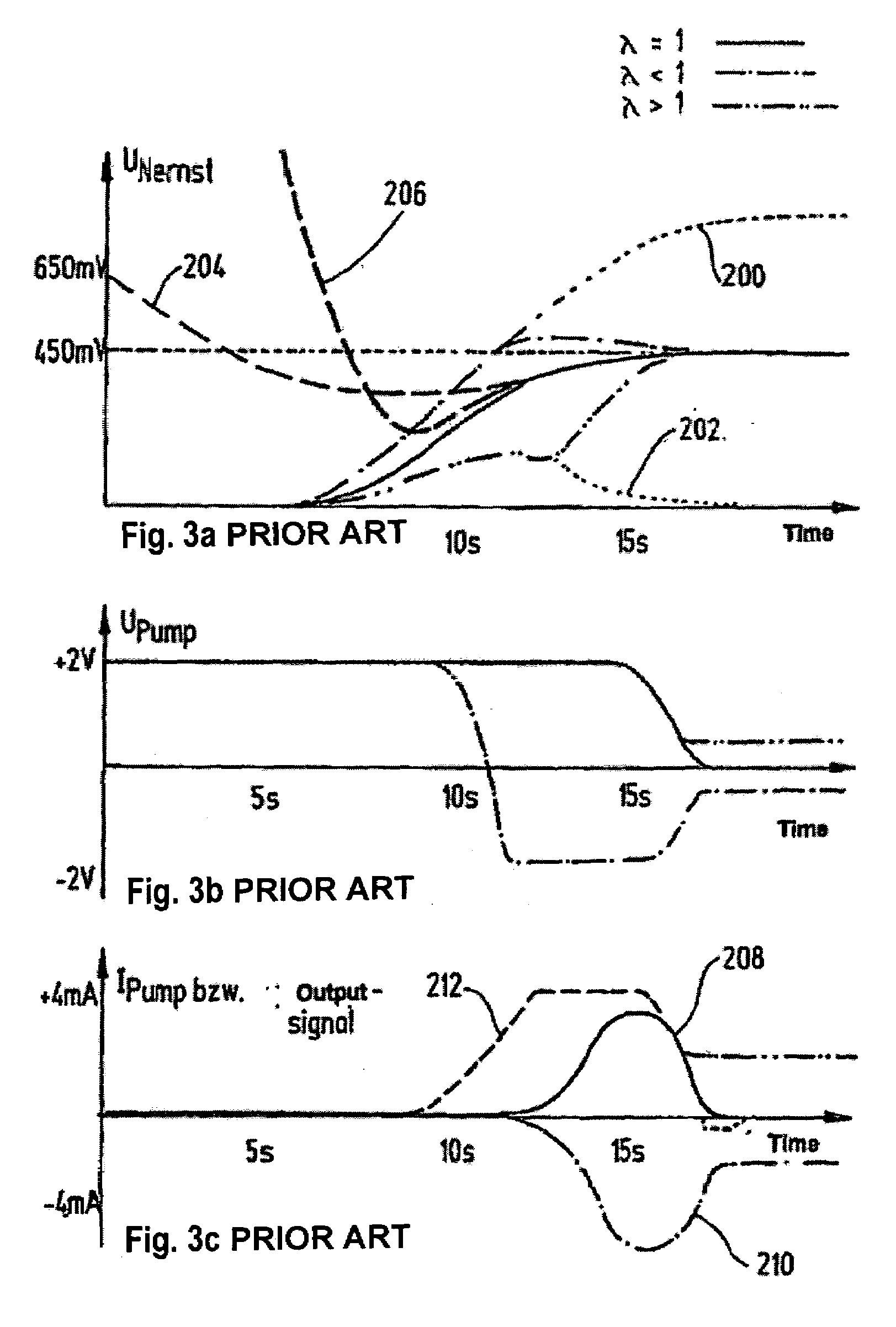Wide band lambda probe having improved starting behaviour
a lambda probe and wide band technology, applied in the direction of electrical control, instruments, material electrochemical variables, etc., can solve the problems of serious interference with regulation, slow increase of the nernst voltage from 0v to 450 mv, etc., to achieve avoid complicated suppression of the sensor output signal or a switch-off of the pump voltage, improve the starting performance, and avoid the effect of high amplification
- Summary
- Abstract
- Description
- Claims
- Application Information
AI Technical Summary
Benefits of technology
Problems solved by technology
Method used
Image
Examples
Embodiment Construction
[0020]In the broadband lambda sensor 10 shown in FIG. 1, exhaust gas 12 reaches the actual measuring chamber 18 of a Nernst cell 20 through a small orifice 14 in a pump cell 16, the so-called “diffusion gap”, which acts as diffusion barrier. Adjacent to Nernst cell 20 is a reference gas chamber 19 containing an oxygen reference gas. Measuring chamber 18 is always set to a stoichiometric air-fuel ratio. An evaluation and control circuit 22 located in a control device 21 or similar device regulates a pump voltage U_Pump present at pump cell 16 in such a way that the composition of the gas in measuring chamber 18 remains constant at lambda=1. With lean exhaust gas 12, pump cell 16 pumps oxygen from measuring chamber 18 to the outside. On the other hand, when exhaust gas 12 is rich, the oxygen of exhaust gas 12 from the environment is pumped into measuring chamber 18, thereby reversing the direction of electric pump current I_Pump. The pump current is proportional to the oxygen concentr...
PUM
| Property | Measurement | Unit |
|---|---|---|
| voltage | aaaaa | aaaaa |
| sensor voltage | aaaaa | aaaaa |
| operating temperature | aaaaa | aaaaa |
Abstract
Description
Claims
Application Information
 Login to View More
Login to View More - R&D
- Intellectual Property
- Life Sciences
- Materials
- Tech Scout
- Unparalleled Data Quality
- Higher Quality Content
- 60% Fewer Hallucinations
Browse by: Latest US Patents, China's latest patents, Technical Efficacy Thesaurus, Application Domain, Technology Topic, Popular Technical Reports.
© 2025 PatSnap. All rights reserved.Legal|Privacy policy|Modern Slavery Act Transparency Statement|Sitemap|About US| Contact US: help@patsnap.com



